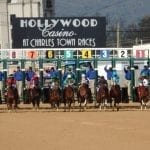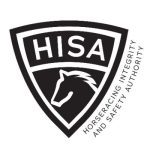1/ST Racing calls for less racing, share of VLT revenue in Maryland
Maryland racing badly needs new facilities. But perhaps even more vital is a new operating model. That was the gist of a presentation by 1/ST Racing executives Craig Fravel and Kevin Gilmore to the Maryland Thoroughbred Racetrack Operating Authority Friday afternoon.
“How long would any business want to continue to operate with a $10 million-a-year loss with no prospect of turning around? I don’t think it’s a long horizon,” Fravel said in response to a question from George Mahoney, who is the Maryland Racing Commission’s non-voting representative on the Authority.
“It’s something that has to be addressed,” Mahoney replied. “For the horsemen, the horse breeders, and taxpayers, the state of Maryland, to invest heavily in your business, I think, would be wonderful, but the reality is, your presentation this morning was red ink, red ink, red ink. It’s not cheerful to hear.”
The meeting, the fourth public meeting of the Operating Authority, was intended to bring out the views of 1/ST Racing, the parent company of local track operator the Maryland Jockey Club. It followed two meetings that primarily were comprised of executive sessions and a third in which the Maryland Stadium Authority outlined the progress – or lack thereof – in the rehabilitation of Pimlico Race Course and Laurel Park.
But anyone hoping to find quick fixes, or easy fixes, or any fixes at all likely went away disappointed. There are no easy answers to what ails Maryland racing. While the meeting at which the Stadium Authority presented outlined the dismal state of the local racing facilities– and the hundreds of millions of dollars needed to bring them up to speed – today’s focused on what may be an even more fundamental challenge: making the everyday business of live racing profitable, or at least revenue-neutral.
It was not, as Mahoney said, cheerful.
On a slide entitled “Diverging trends since 2013,” Fravel pointed to the Maryland Jockey Clubs EBITDA (earnings before interest, taxes, depreciation, and amortization – a common accounting tool). The company has been in the red every year since 2013, according to the slide, with the shortfall hitting $14 million in 2022 – the largest in that timeframe.
The horsemen and breeders have contributed tens of millions of dollars to 1/ST to help offset those losses, more than $80 million over the last decade according to industry sources.
The company’s numbers excluded Preakness day, which for years was Maryland racing’s cash cow, spinning off enough money to make both the track operator and the purse account whole each year. But in each of the last two years, according to Fravel, even the Preakness has been a money-loser, to the tune of a $2.9 million loss in 2022 and $1.9 million this spring.
“Day to day racing in Maryland has to be reimagined, and it needs to be reimagined on an economically sustainable basis for all the participants,” Fravel told the Authority. “Not just for us, but for the horsemen and for the communities where we operate.”
For that to happen, he said, several things need to happen.
First, he said the company supports “the redevelopment of Pimlico as the future home of racing.” That would, of course, keep the Preakness in Baltimore at a renovated Old Hilltop, which would nevertheless have only limited stabling capacity, most likely limited to in-today horses.
CHECK OUT THE LATEST OFF TO THE RACES RADIO!
Such a step would necessitate the creation of a training center to handle the horses necessary to maintain the racing program. Possible venues currently owned by the company include Laurel, which in this scenario would cease to be a racetrack but could still be used for training, and Bowie, a onetime racetrack that served as a training center until the mid-2010s.
Third and fourth – and perhaps more like 3 and 3a – are “re-aligning the racing calendar around the Mid-Atlantic” and “updating the economic model to full support racing and training operations.”
What does “realigning the racing calendar mean?” Fravel was asked by Authority member and Maryland Thoroughbred Horsemen’s Association (MTHA) general counsel Alan Foreman.
“We’ve made a proposal, I think, to the MTHA … about taking a break in the calendar, and shifting racing, the focus of racing, to Colonial during the summer months because they’re paying $600,000 or $700,000 today in purse money,” Fravel said. “Every racetrack around this country is desirous of having better horse populations and more horses race.”
Indeed, Fravel said that the company’s analysis envisions a much shorter Maryland racing season. Since the lion’s share of purse money is generated by the industry’s share of slots money, fewer days of racing would mean larger per-race purses.
“We think that 80 to 90 days can be a very viable racing calendar,” Fravel said. “Even with that, though, operationally there needs to be some reconsideration of the distribution of VLT revenues, but we also think that those days can be run with purses in excess of $500,000, maybe even $600,000 a day, which is highly competitive in the local, regional marketplace.”
Maryland hosted 175 days of live racing in 2022 and has hosted as many as 187 days in recent years.
“I think the number of race days is not about shrinking the industry,” said Fravel’s 1/ST Racing colleague Kevin Gilmore, the company’s executive vice-president and chief operating officer. “It’s about sustaining the industry. It’s about finding an ecosystem that’s viable across the board.”
Among nearby peer states like Virginia, West Virginia, Delaware, Pennsylvania, and New Jersey, only Colonial Downs, which gave away more than $500,000 daily in purses in 2023, has markedly higher purses than does Maryland. Those in Delaware and West Virginia are lower.
In addition to a curtailed schedule, Fravel said that the company believes that the way the racing industry’s financial pie is divided needs to be revisited. Currently, the track operator receives no money from VLT revenue, while the purse account receives tens of millions of dollars. Meanwhile, the horsemen do not participate in various other revenue sources, such as ticket sales, food and beverage, and sponsorships; but all those have been squeezed in recent years as racing has shrunk in popularity.
“The horsemen get over $70 million dollars in total net revenue [from VLT subsidies and parimutuel wagering] while the racetracks receive $31 million,” Fravel said. “[Running a racetrack] is a massively expensive day-to-day operation, and those numbers simply don’t cover our out-of-pocket expense.”
Fravel said the company is committed to Maryland and to the Preakness. But some members of the Authority appeared skeptical.
“I’m not suggesting that there aren’t changes that need to be made, that we shouldn’t be the beneficiaries of new facilities, like the Ravens and the Orioles,” the MTHA’s Foreman commented. “We contribute millions of dollars to the economy, jobs, agriculture. But it seems like the equity share just doesn’t work.”
Foreman has been at pains in recent months to remind people of the state racing industry’s tortured recent history. That includes Frank Stronach’s failure to submit a proper application to host slot machines at Laurel Park, which led to those machines being awarded to the nearby Maryland Live! Casino.
Saying that “a lot of things that happened in the past, I think, are in the past,” Fravel added, “The time is now to focus on the future and what we can do to make this work.”
The Authority’s next meeting is scheduled for October 6.
LATEST NEWS














What would happen if 1/ST only asks for 28 days of racing next year say around the Preakness? Can anyone force them to race more?
Generally tough to force them to run more days, particularly if there’s no contract in place. On the other hand, the Commission wouldn’t have to award them any days at all if ii didn’t feel they were acting appropriately.